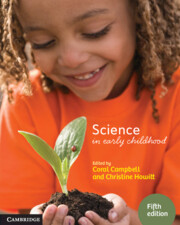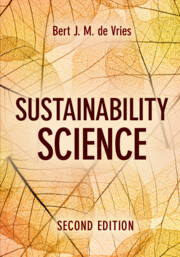Refine search
Actions for selected content:
37615 results in Cambridge Textbooks

Science in Early Childhood
-
- Published online:
- 13 December 2023
- Print publication:
- 10 January 2024
-
- Textbook
- Export citation

Sustainability Science
-
- Published online:
- 07 December 2023
- Print publication:
- 07 December 2023
-
- Textbook
- Export citation

Statistics Using R
- An Integrative Approach
-
- Published online:
- 07 December 2023
- Print publication:
- 07 December 2023
-
- Textbook
- Export citation

Re-imagining Social Work
- Towards Creative Practice
-
- Published online:
- 07 December 2023
- Print publication:
- 21 December 2023
-
- Textbook
- Export citation
20 - Stories About the Future
- from Part VI - Closure
-
- Book:
- Sustainability Science
- Published online:
- 07 December 2023
- Print publication:
- 07 December 2023, pp 529-552
-
- Chapter
- Export citation
Foreword
-
- Book:
- Sustainability Science
- Published online:
- 07 December 2023
- Print publication:
- 07 December 2023, pp xx-xxii
-
- Chapter
- Export citation
2 - Languages of Europe
-
- Book:
- Languages of the World
- Published online:
- 21 November 2023
- Print publication:
- 07 December 2023, pp 43-76
-
- Chapter
- Export citation
Chapter Ten - Inferences Involving the Mean of a Single Population When σ is Known
-
- Book:
- Statistics Using R
- Published online:
- 07 December 2023
- Print publication:
- 07 December 2023, pp 289-317
-
- Chapter
- Export citation
Chapter Six - Simple Linear Regression
-
- Book:
- Statistics Using R
- Published online:
- 07 December 2023
- Print publication:
- 07 December 2023, pp 195-221
-
- Chapter
- Export citation
Chapter Four - Re-Expressing Variables
-
- Book:
- Statistics Using R
- Published online:
- 07 December 2023
- Print publication:
- 07 December 2023, pp 110-147
-
- Chapter
- Export citation
Part VI - Closure
-
- Book:
- Sustainability Science
- Published online:
- 07 December 2023
- Print publication:
- 07 December 2023, pp 527-552
-
- Chapter
- Export citation
4 - Languages of Northern Eurasia
-
- Book:
- Languages of the World
- Published online:
- 21 November 2023
- Print publication:
- 07 December 2023, pp 109-147
-
- Chapter
- Export citation
18 - Materials: Towards a Circular Economy
- from Part V - Sustainability Themes
-
- Book:
- Sustainability Science
- Published online:
- 07 December 2023
- Print publication:
- 07 December 2023, pp 460-495
-
- Chapter
- Export citation
Chapter Twelve - Research Design: Introduction and Overview
-
- Book:
- Statistics Using R
- Published online:
- 07 December 2023
- Print publication:
- 07 December 2023, pp 380-400
-
- Chapter
- Export citation
Part IV - Understanding Sustainable Development
-
- Book:
- Sustainability Science
- Published online:
- 07 December 2023
- Print publication:
- 07 December 2023, pp 161-230
-
- Chapter
- Export citation
Index of Languages
-
- Book:
- Languages of the World
- Published online:
- 21 November 2023
- Print publication:
- 07 December 2023, pp 477-486
-
- Chapter
- Export citation
12 - Pillars of Development: Health, Education and Mobility
- from Part V - Sustainability Themes
-
- Book:
- Sustainability Science
- Published online:
- 07 December 2023
- Print publication:
- 07 December 2023, pp 282-309
-
- Chapter
- Export citation
Dedication
-
- Book:
- Languages of the World
- Published online:
- 21 November 2023
- Print publication:
- 07 December 2023, pp v-vi
-
- Chapter
- Export citation
Chapter Two - Examining Univariate Distributions
-
- Book:
- Statistics Using R
- Published online:
- 07 December 2023
- Print publication:
- 07 December 2023, pp 26-71
-
- Chapter
- Export citation
Preface
-
- Book:
- Sustainability Science
- Published online:
- 07 December 2023
- Print publication:
- 07 December 2023, pp xxiii-xxx
-
- Chapter
- Export citation
